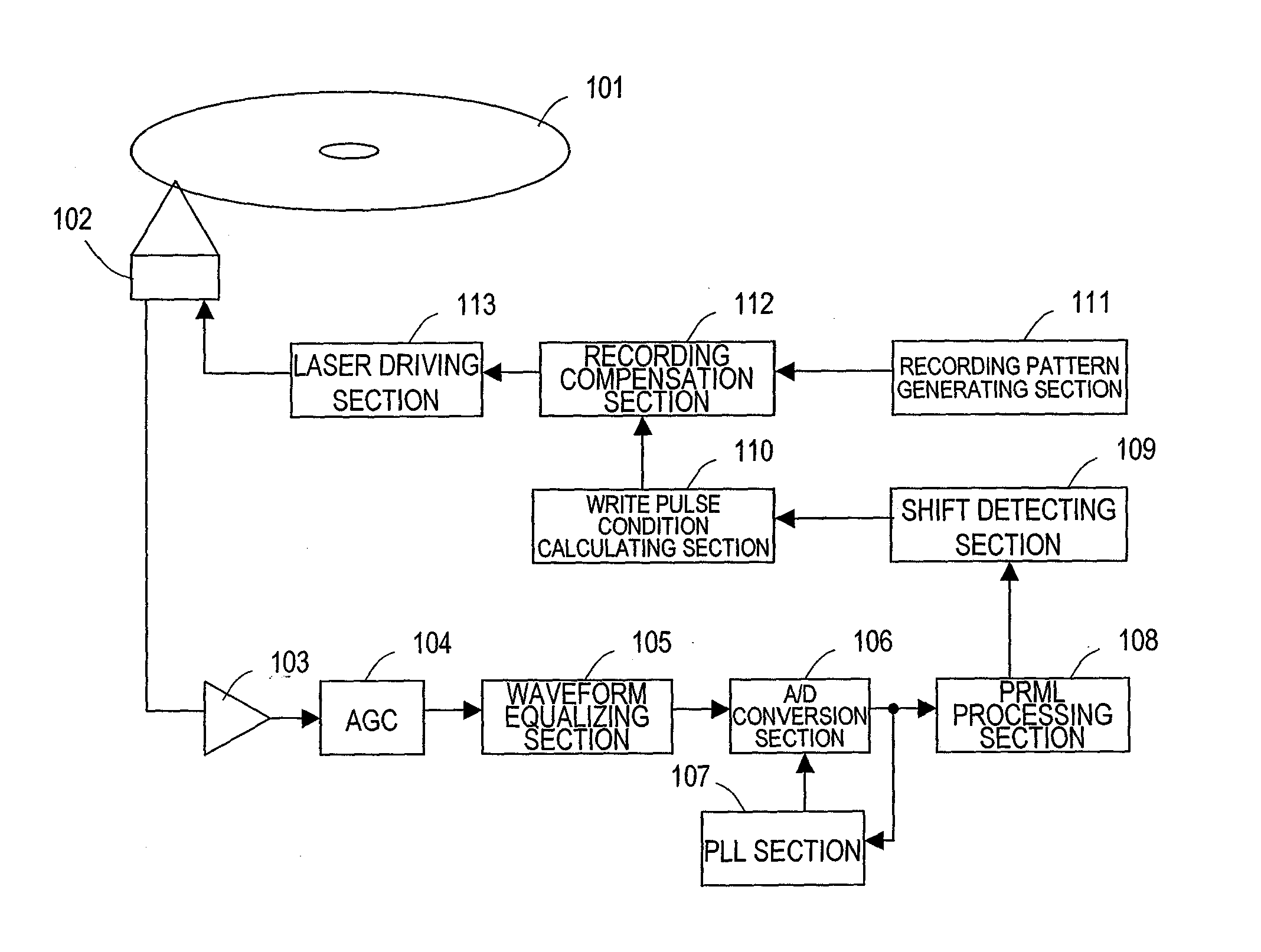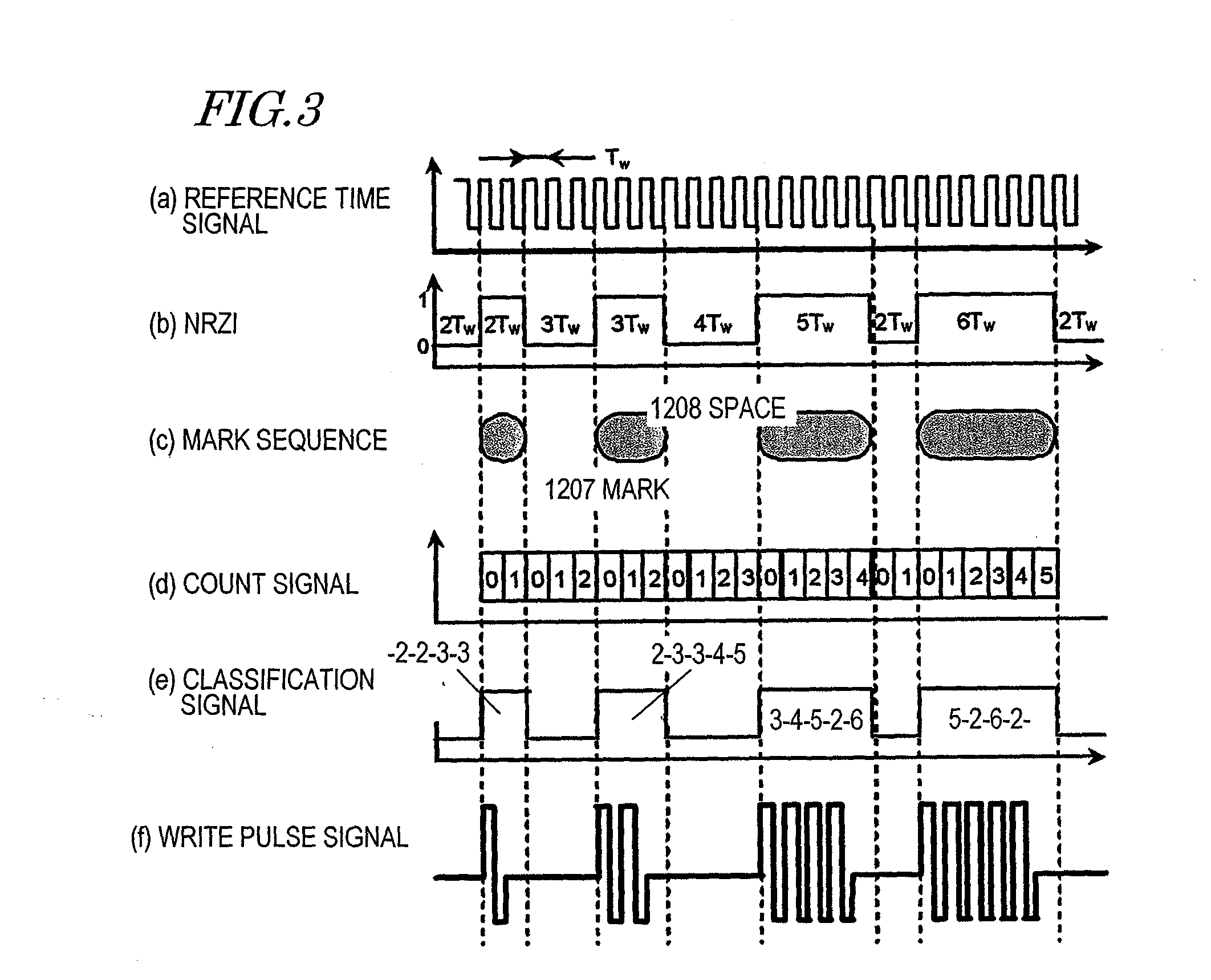Optical recording method, optical recording apparatus, apparatus for manufacturing a master through exposure process, optical information recording medium and reproduction method
- Summary
- Abstract
- Description
- Claims
- Application Information
AI Technical Summary
Benefits of technology
Problems solved by technology
Method used
Image
Examples
Embodiment Construction
[0077]Hereinafter, embodiments of the present invention are described with reference to the accompanying drawings. The embodiments are described with examples of a write-once, phase-change type optical disc medium (especially, BD-R (write-once Blu-ray Disc)) used as a recording medium. Note that this does not mean that the recording medium is limited to any particular type. The type of the recording medium is nonlimiting so long as it is of such a type that information is recorded by injecting energy into the recording medium to form marks or pits which have different physical properties from unrecorded part. For example, the techniques described herein are commonly applicable to rewritable optical disc media (e.g., BD-REs (rewritable Blu-ray Discs)). The techniques described herein are also commonly applicable to heat-mode recording on an inorganic resist coating, as is the case with a master-manufacturing exposure apparatus called a PTM (Phase Transition Mastering) apparatus that ...
PUM
 Login to View More
Login to View More Abstract
Description
Claims
Application Information
 Login to View More
Login to View More - R&D
- Intellectual Property
- Life Sciences
- Materials
- Tech Scout
- Unparalleled Data Quality
- Higher Quality Content
- 60% Fewer Hallucinations
Browse by: Latest US Patents, China's latest patents, Technical Efficacy Thesaurus, Application Domain, Technology Topic, Popular Technical Reports.
© 2025 PatSnap. All rights reserved.Legal|Privacy policy|Modern Slavery Act Transparency Statement|Sitemap|About US| Contact US: help@patsnap.com



